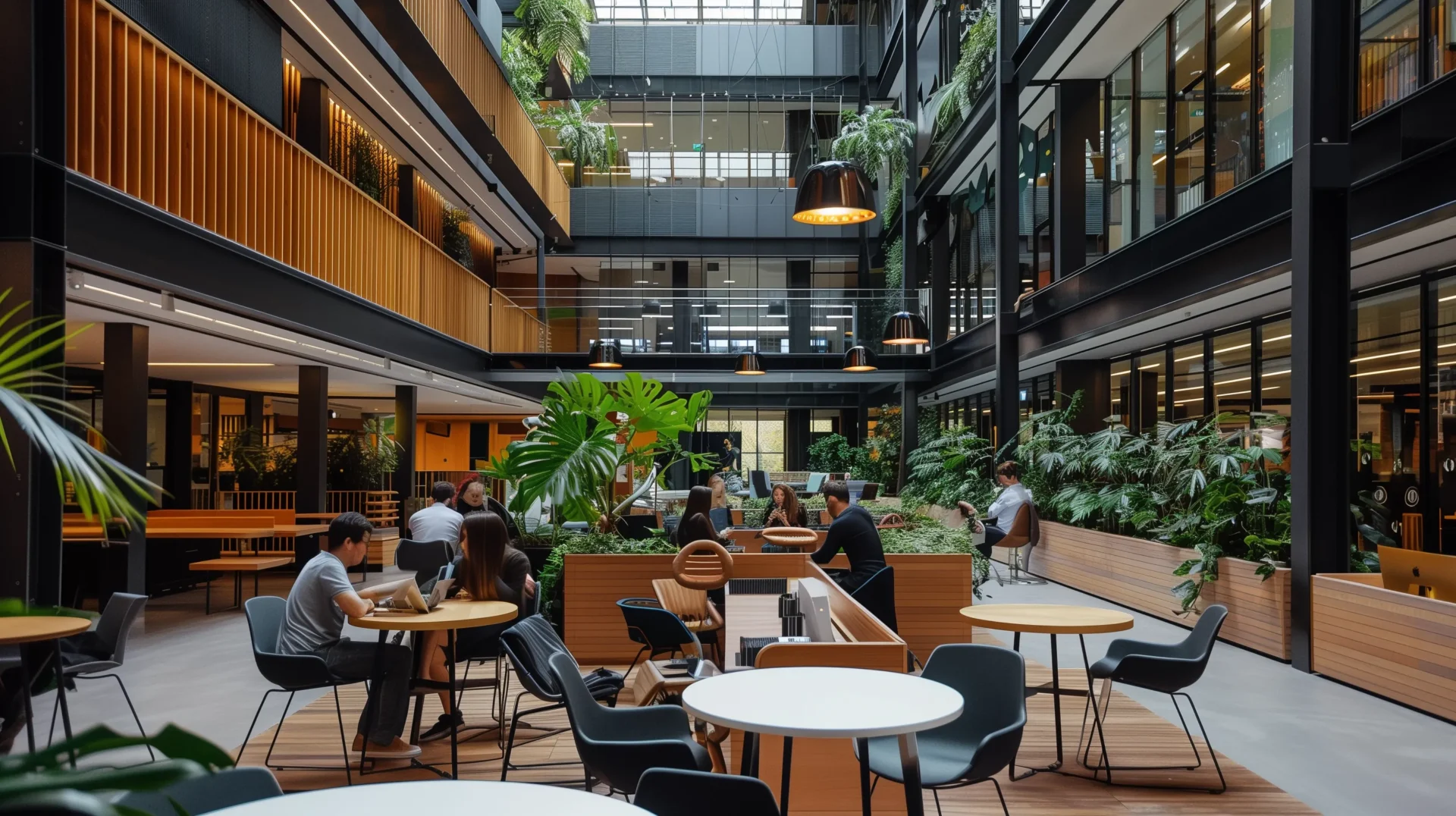
In recent years, coworking spaces have sprung up across cities and towns, catering to a growing number of freelancers, entrepreneurs, and remote workers. You might be surprised to learn that some of these coworking spaces are hosted within large commercial office buildings and are offered to the public for free or at very low costs. But why would these substantial office buildings, often home to established businesses, open their doors to the public in this way? Let’s delve into the strategic reasons behind this trend and understand the myriad benefits for both the office buildings and their temporary tenants.
Utilisation of Underused Space
One of the primary reasons commercial offices offer coworking spaces is to make use of areas that would otherwise remain underutilised. Office buildings often have excess space that isn’t consistently occupied, particularly during certain times of the year or due to varying occupancy rates. By transforming these vacant areas into vibrant coworking spaces, building managers can optimise space usage effectively. This not only ensures that the space isn’t wasted but also helps in maintaining a lively atmosphere throughout the building.
Enhancing Brand Visibility and Marketing
Allowing the public to use coworking spaces can significantly boost the visibility of the office building and the companies managing it. It’s a subtle yet effective form of marketing. Imagine a freelancer working in a beautifully designed coworking space within a prestigious office building – they’re likely to share their positive experiences with peers and on social media. This organic promotion can attract potential long-term tenants or clients who might eventually decide to lease more permanent office spaces. It’s a win-win scenario where both the building’s brand and occupancy rates benefit.
Fostering Community and Networking
Creating a coworking space is a fantastic way to build a sense of community and encourage networking among different professionals. These spaces bring together individuals from various industries, fostering an environment ripe for collaboration and partnership. For instance, a graphic designer might find their next big project by connecting with a startup founder over a coffee in the shared kitchen. Such interactions can lead to new business opportunities, benefiting not only the coworking members but also the building’s permanent tenants who can tap into this dynamic network.
Generating Additional Revenue
Even when offered at a low price, coworking spaces still generate some revenue. While it might not be as substantial as leasing full office spaces, it contributes to the building’s income. Furthermore, once people become accustomed to using the coworking space, they might be more inclined to pay for additional services or even consider a more permanent office arrangement within the building. This gradual upselling can be a steady revenue stream, supporting the overall financial health of the property.
Providing Flexibility for Existing Tenants
Offering coworking spaces also provides current tenants with flexible options for their own employees or guests. This added value can be a significant attraction for businesses looking for adaptable workspace solutions. For example, a company might use the coworking area for overflow during a busy project period, for visiting employees from other locations, or for remote workers who need occasional office time. This flexibility can enhance tenant satisfaction and retention, making the building more attractive to potential long-term leaseholders.
Standing Out in a Competitive Market
In today’s competitive real estate market, offering coworking spaces can help a commercial office building stand out from the crowd. It positions the building as innovative and responsive to the evolving nature of work. Modern businesses are increasingly looking for workspaces that offer more than just a desk and chair; they seek environments that promote creativity, flexibility, and community. By incorporating coworking spaces, office buildings can align themselves with these modern workplace trends, attracting forward-thinking tenants.
Gathering Valuable Data and Insights
Running a coworking space provides a unique opportunity to gather data on how people use the space, what amenities are most popular, and what types of work environments are in demand. This information is invaluable for future real estate developments and improvements. By understanding the needs and preferences of modern workers, building managers can tailor their offerings to better meet market demands, ensuring their properties remain attractive and competitive.
Corporate Social Responsibility
Lastly, offering coworking spaces at low or no cost can be part of a company’s corporate social responsibility (CSR) initiatives. Supporting freelancers, entrepreneurs, and small businesses in the community contributes to local economic development and fosters goodwill. This approach not only enhances the company’s public image but also builds a positive relationship with the community. In essence, it’s a way of giving back while simultaneously nurturing potential future clients and tenants.
Conclusion
Offering free or low-cost coworking spaces to the public is a multifaceted strategy that benefits large commercial offices in numerous ways. From optimising space utilisation and enhancing brand visibility to fostering community and generating revenue, the advantages are significant. Additionally, these spaces provide flexibility for tenants, help buildings stand out in a competitive market, and offer valuable insights into workspace preferences. They also align with corporate social responsibility goals, supporting local economic development. As the nature of work continues to evolve, such innovative approaches to workspace management are likely to become even more prevalent, shaping the future of commercial real estate.